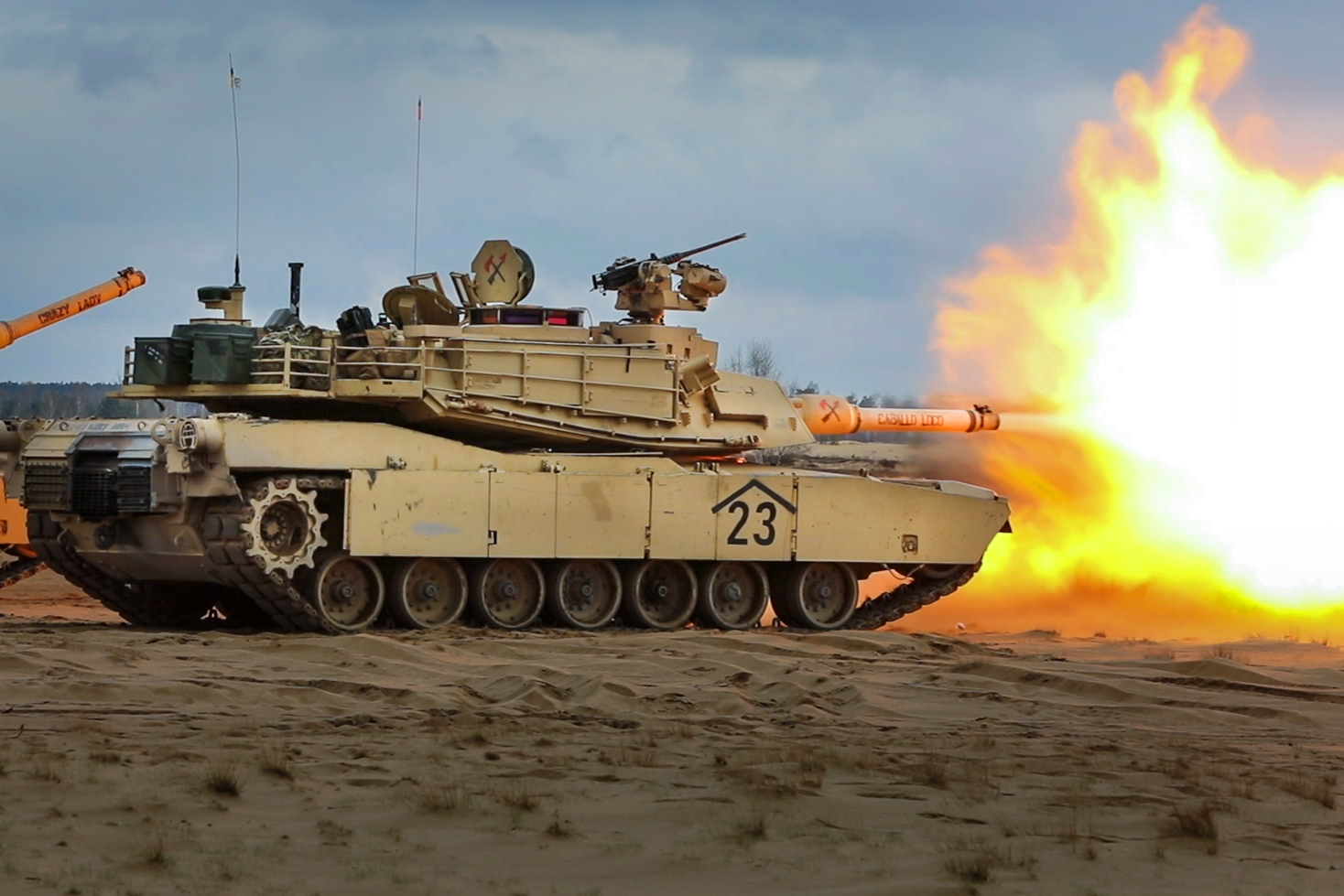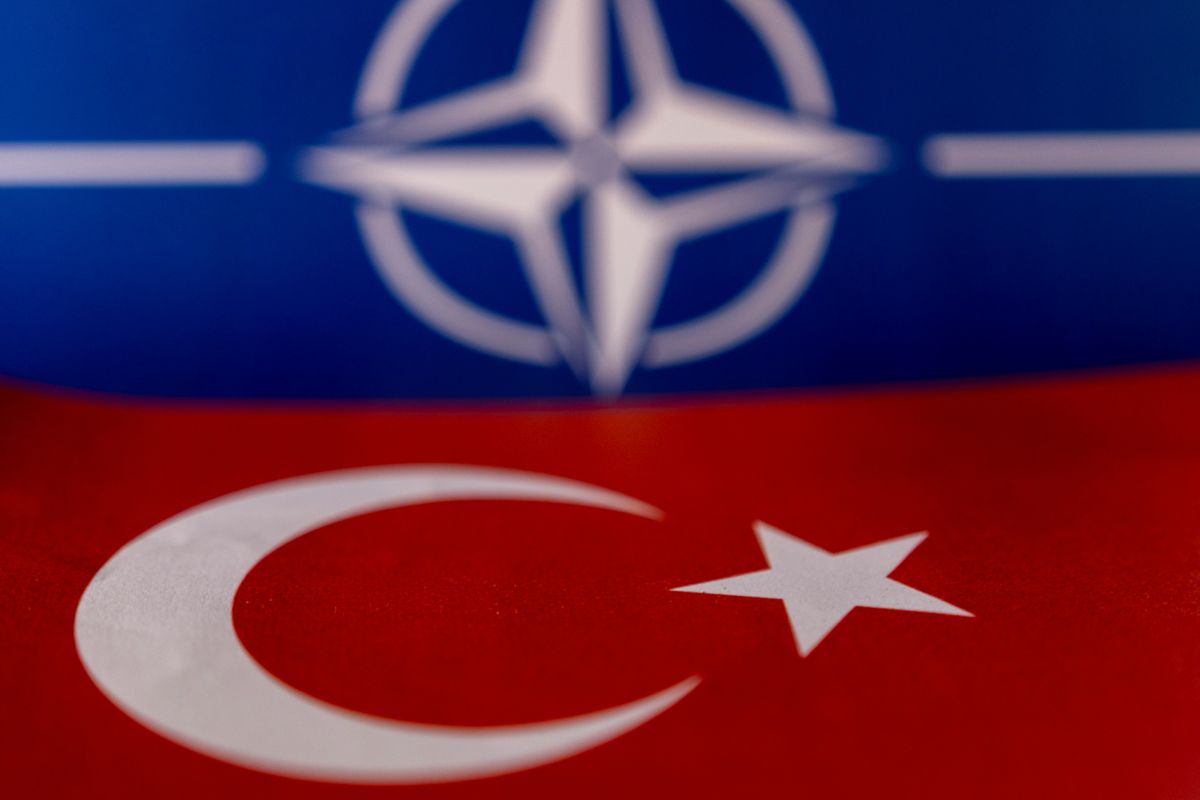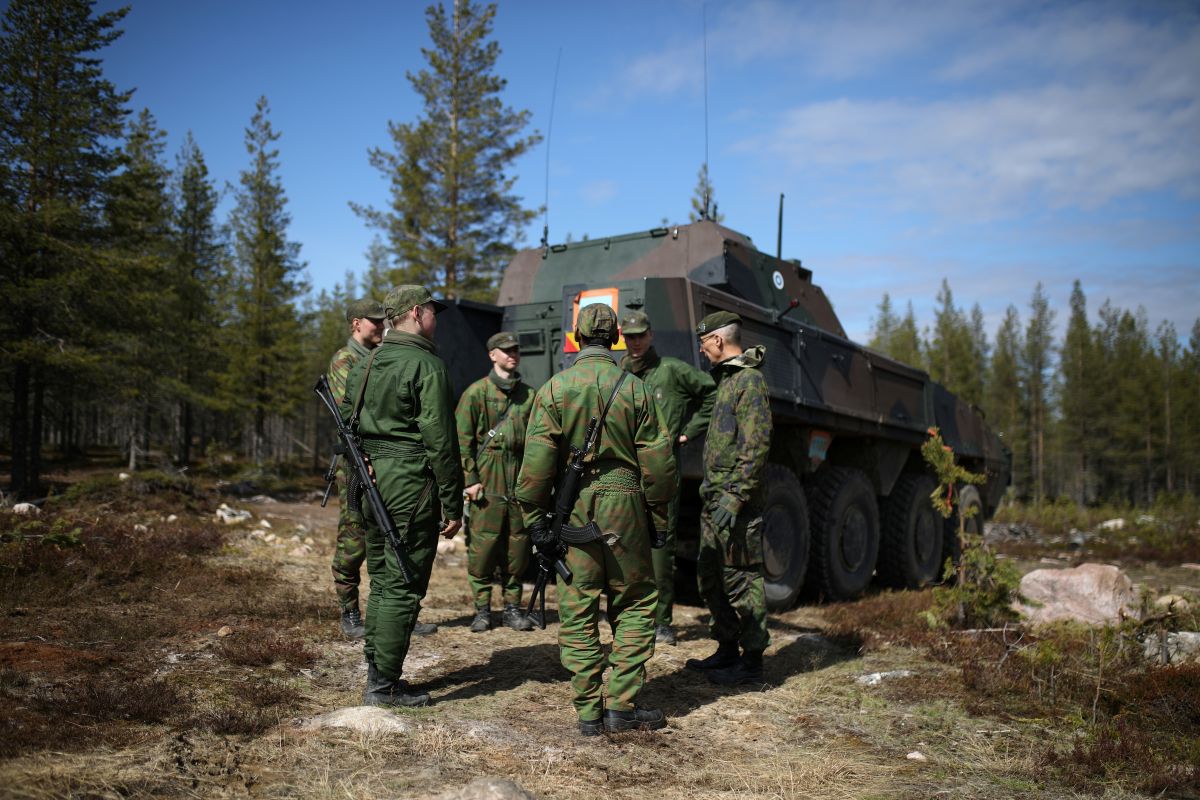NATO Madrid Summit: a Response to Russia's Revisionism
NATO’s new strategy identifies Russia as the main military threat to the Alliance, which declares the strengthening of defence and deterrence. It is in Poland’s interest to implement the plans to establish NATO brigade structures on the Eastern Flank as soon as possible and to develop a new model of reinforcement forces. Poland should also continue its efforts to secure the permanent combat presence of U.S. troops on its territory. It will play a crucial role in the further adaptation of the Alliance to the long-term threats from Russia and China.
 U.S. Army/ Zuma Press/ FORUM
U.S. Army/ Zuma Press/ FORUM
On 29-30 June, at the NATO summit in Madrid, Alliance leaders approved a new strategy that reflects a radical change in the Alliance’s threat perception caused by Russia’s revisionist policy. They also decided to change their approach to defence and deterrence policy and invited Sweden and Finland to join NATO. In the adopted declaration, they announced additional support for Ukraine, among other measures. NATO’s decisions were supplemented by the U.S. plans to strengthen its military presence in Europe.
A Change of NATO’s Priorities
The strategy approved in Madrid refocuses the Alliance’s attention on the threats posed by Russia and the need to strengthen collective defence. The previous strategy in 2010 stated that the main threat to NATO was terrorism and that the risk of an attack on Alliance territory was low. NATO was to pursue a partnership with Russia based on the 1997 NATO-Russia Act (NRFA), which limited, among others, the possibility of deploying “substantial combat forces” in the countries of the Eastern Flank. Now the Alliance states that Russia is the most significant and direct threat to Allies’ security and peace in the Euro-Atlantic area. The Alliance cannot discount the possibility of a surprise attack or aggression with very short warning. The strategy does not refer directly to the NRFA, but NATO clearly signals that its military actions and relations with Russia will not be guided by this document. The Allies emphasise that Russia cannot be treated as a partner and that collective defence will be based on “substantial forces”.
At the same time, the Alliance decided to change its approach to defence and deterrence, moving from the forward presence mainly for political signalling to one that enables defence. The forces on the Eastern Flank are to be increased and the time of arrival of reinforcements will be shortened. Multinational battalions in Estonia and Lithuania are to be changed into brigade structures (about 3,000-5,000 soldiers). A quick formation of full-fledged brigades will be facilitated by prepositioned stocks of equipment. Instead of the 40,000-strong NATO response force (NRF) the Supreme Allied Commander Europe (SACEUR) will have at least 500,000 troops at his disposal. The initial concept of the new force model assumes that 100,000 troops will be ready for action in 10 days, 200,000 in 30 days, and at least 500,000 in 180 days. The units placed under NATO command are to be assigned to specific countries, which will better prepare them for fighting under local conditions. Command structures and exercises will be strengthened. Increasing the NATO common budget will allow financing of, among others, the growing command structures and infrastructure necessary for the deployment and stationing of troops. The Allies also approved a plan to replace AWACS early warning aircraft, which provide a capability crucial for achieving air superiority during a confrontation with Russia. In the area of nuclear deterrence, the Allies announced that they will strengthen strategic communication and exercises, which should make it easier to respond to nuclear threats from Russia. After the signing of an agreement between Türkiye and Sweden and Finland on combating terrorism, Türkiye unblocked the process of the two countries’ accession to NATO, which will further strengthen NATO’s collective defence potential in the Baltic Sea region. Although the Alliance agreed to increase its support for Ukraine, it still will be based primarily on bilateral efforts. Countries that bear the biggest costs and risks can, however, expect greater support from NATO and on a bilateral basis.
Strengthening NATO’s Political Cohesion
Despite the shift in priorities, the Alliance intends to maintain a broad approach to security. The ability to respond to various threats and to protect the main interests of all members is essential to maintaining the political cohesion of the Alliance, which may be threatened by unexpected crises and actions of rivals below the threshold of open conflict. NATO announced that it will continue to perform three tasks: defence and deterrence, crisis response, and cooperative security. Collective defence will be further based on the 360-degree principle, which means developing the capability to respond to threats from all directions. The Alliance will also maintain a global outlook. Terrorism is recognised as the main, asymmetric threat but is placed within the context of collective defence. This means that strengthening of the Eastern Flank may be conditioned by the support for the security interests of Southern Flank Allies, especially Türkiye. For the first time, NATO’s strategy includes a reference to China, whose stated ambitions and policies are presented as a challenge to NATO’s security, interests, and values. The alliance points out that China and Russia are deepening their strategic partnership and that some of the threats posed by the authoritarian rivals are common. This applies to their attempts to undermine the rules-based international order, limit freedom of navigation, engage in propaganda, hybrid activities, threats in cyberspace, and space, and threats to the resilience of the allies, among others. The strategy strengthens the deterrence of China and Russia, emphasising that Art. 5 of the Washington Treaty can be invoked in response to cyberattacks, hybrid aggression, or threats in space. Technological competition will be facilitated by the creation of a defence innovation accelerator and a special fund (announced in 2021) to support the development of emerging and disruptive technologies (EDT). The strategy emphasises the importance of the EU as a key partner of NATO in strengthening many areas of security, also in the context of China.
Crisis-response missions are relegated to the background. The Alliance will try to reduce the risk of crises and the need to engage in missions through more effective support for partner countries and cooperation with the EU. The allies also approved a more ambitious plan to reduce greenhouse gas emissions (GHGs) from infrastructure (e.g., headquarters) and troops participating in NATO missions. A strategy formulated in this way supports the most important security interests of the member states and may strengthen the political cohesion of the Alliance. Above all, however, it should strengthen transatlantic ties at a time when the U.S. begins to treat China as its main long-term strategic threat.
The Strengthening U.S. Military Presence in Europe
Parallel to the decisions taken by NATO, the United States announced a long-term strengthening of its military presence in Europe. Most decisions, however, had been made before and were now only confirmed. This includes the deployment of two F-35 squadrons in the UK, an increase in the number of guided missile destroyers stationed in Spain from four to six, and the strengthening of air defence systems in Germany. The new decisions concern an increase in the rotational presence in Europe (an additional brigade in Romania) and the shift of some rotational forces to the Baltic states. A significant change took place in the communication regarding the American presence on the Eastern Flank. The U.S. administration announced that the element of the V Corps Headquarters already deployed to Poland would be permanent. Poland is also to play the role of a regional hub from which rotating U.S. troops will operate along the Eastern Flank. At the same time, a high-ranking representative of the department of defence stated that the decisions made by the U.S. were in line with the NRFA. This undermines NATO’s actions, which were supposed to be a signal that the Alliance does not feel constrained by this document.
Conclusions and Recommendations
NATO’s decisions can strengthen its ability to defend Eastern Flank members and will make it more difficult for Russia to intimidate the Alliance. However, this requires the implementation of plans to establish brigade structures and the development of a new model of reinforcement forces. It would be in Poland’s interest to create brigade structures also in Latvia, where Polish troops are stationed as part of a battle group commanded by Canada. Poland and the Baltic States should also strive for changing the brigade structures into full-fledged brigades.
A constant problem and a risk factor will be Russia’s perception of the Eastern Flank countries as a buffer zone whose status can be negotiated. Signals that the U.S. is still ready to respect the NRFA may only encourage Russia to try to achieve its goals by escalating the conflict in Ukraine and increasing the costs and threats to NATO. They will also fuel allies’ concerns about the U.S. determination to defend Europe, which may lead to a breakdown of NATO’s political cohesion in the face of the protracted war in Ukraine and the need for a long-term adaptation to threats from Russia and China. Therefore, Poland should continue its efforts to secure a permanent presence of U.S. combat troops on its territory. Such a decision would strengthen NATO’s cohesion and the Allies’ determination to bear the necessary costs and risks associated with a long-term confrontation with Russia and China. It would also be an unequivocal signal to Russia that it cannot achieve its goals by waging a war of attrition with Ukraine and maintaining a conflict below the threshold of open war with the West.





